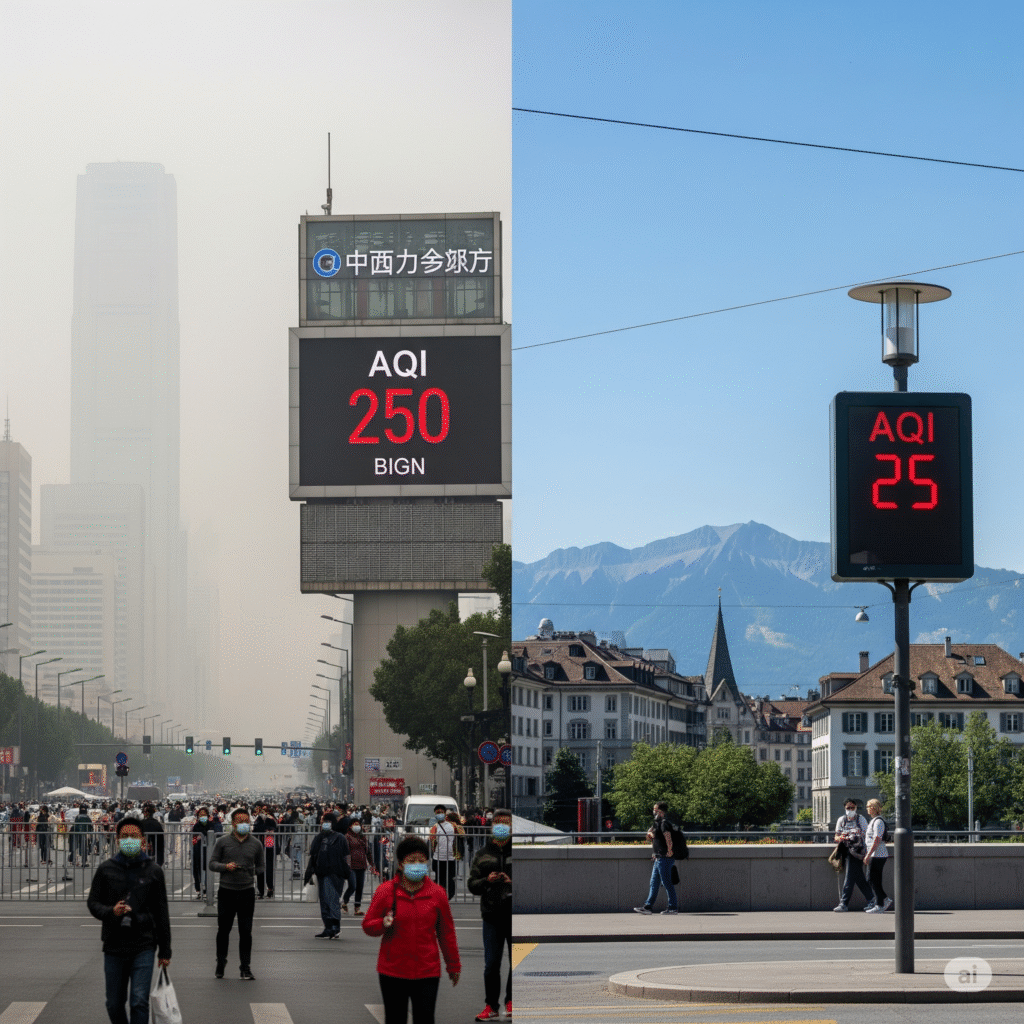🌱 What is AQI?
The Air Quality Index (AQI) is a number that shows how clean or polluted the air is. It helps people know whether the air is safe to breathe or if it can be harmful 😷. AQI values differ not only day by day but also from one city to another, and even more between countries.
AQI is influenced by many factors such as traffic 🚗, industries 🏭, geography 🏔️, and government policies 🏛️. That is why AQI differs across cities and countries.
🏙️ AQI Differences Between Cities
Cities often face more pollution compared to villages or small towns. Here’s why AQI varies across cities:
- High Traffic: Cities with more cars and buses 🚘💨 have higher AQI levels.
- Industries: Cities with large factories usually face worse air quality.
- Construction: Rapid construction adds dust particles 🏗️ to the air.
- Population Density: More people = more vehicles, waste, and pollution.
For example, Delhi often records AQI levels above 300 during winters 🌫️, while smaller cities like Shimla or Dehradun usually have cleaner air with AQI under 100 🌿.
🌍 AQI Differences Between Countries
Different countries face different levels of air pollution depending on their development, laws, and geography:
- Developed Countries (like USA, Japan, Germany): These nations have stricter pollution laws, cleaner technologies, and better public transport. Many cities in these countries enjoy lower AQI levels 🌱.
- Developing Countries (like India, China, Pakistan): Rapid industrial growth and large populations mean higher pollution. Cities here often face AQI levels above 200 or even 400 during certain seasons 😷.
- Geographical Factors: Countries with more forests 🌳 and fewer industries usually have better air quality, while desert regions may face natural dust pollution.
📊 Seasonal AQI Differences
AQI also changes with the seasons:
- Winter: Pollution often gets trapped near the ground due to cold air, leading to very high AQI.
- Summer: AQI may improve because winds disperse pollutants 🌬️.
- Festivals or Events: In many places, fireworks 🎆 during festivals cause AQI to rise sharply.
For example, in India, AQI during Diwali often jumps above 400, while during the rainy season ☔, air becomes cleaner.
📲 Tracking AQI Across the World
Today, it is very easy to compare AQI of different cities and countries with online tools 🌎✨. You can check real-time AQI updates on <a href=”https://aidailydash.com” class=”cmenu-link”>aidailydash</a> 🌼.
By monitoring AQI daily, you can see how your city compares with others and take steps to stay safe when levels rise.
🌟 Final Thoughts
Air quality is not the same everywhere. How AQI differs across cities and countries depends on traffic, industries, laws, geography, and even seasons. Some cities enjoy clean, fresh air 🌱, while others struggle with smog and dust 🌫️.
This shows why pollution control and strong government action are so important worldwide 🌍. By staying aware and checking AQI regularly, we can protect our health and support efforts for a cleaner planet 🌸💚.

